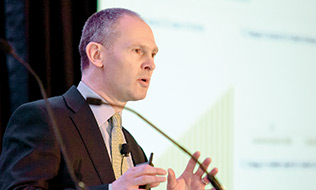

While saving for retirement is an incredibly long journey, visualizing the entire process is a great way to get to better outcomes, according to Neil Walton, head of investment solutions at Schroder Investment Management Ltd.
“Start with the end in mind,” Walton told participants at Benefits Canada’s Defined Contribution Plan Summit. “That means reviewing projected consumption and income needs and asking: What creates a successful retirement?”
Read: DC Plan Summit: Leveraging glide paths to foster resilient asset allocation
Looking at the retirement process as a journey also positions participants to get better leverage at all key stages, Walton noted. For example, during the savings stage, increasing the account size is more important than asset protection, as there’s generally time to recover from market setbacks.
During the stage of approaching retirement, gradually transitioning into income-producing assets becomes more important. In active retirement, asset growth continues to play a role due to the extended retirement periods many of today’s seniors will likely experience. Finally, during late retirement, carefully balancing essential and non-essential spending becomes more important as available asset balances dwindle.
The upshot is that using a dynamic approach to asset management can add considerable value, said Walton. That process includes applying risk management techniques to help members convert accumulated account balances into a suitable mix of post-retirement assets and investigating how a fixed-income portfolio can support essential retirement expenditures.
Read: Company harnesses inertia to get majority of workers to 75% income replacement
A key date to bear in mind is age 85, which Walton noted is the average age plan participants who make it to retirement can expect to live to. As most workers head into retirement in their early 60s, that date meshes well with the 20-year period that Walton said is an effective time horizon to structure a bond portfolio. Age 85 is also an appropriate starting point for retirees’ late retirement phase, as well as a good time to consider annuitizing, according to Walton.
Get a PDF of this article.
Read more coverage from the 2018 DC Plan Summit.
